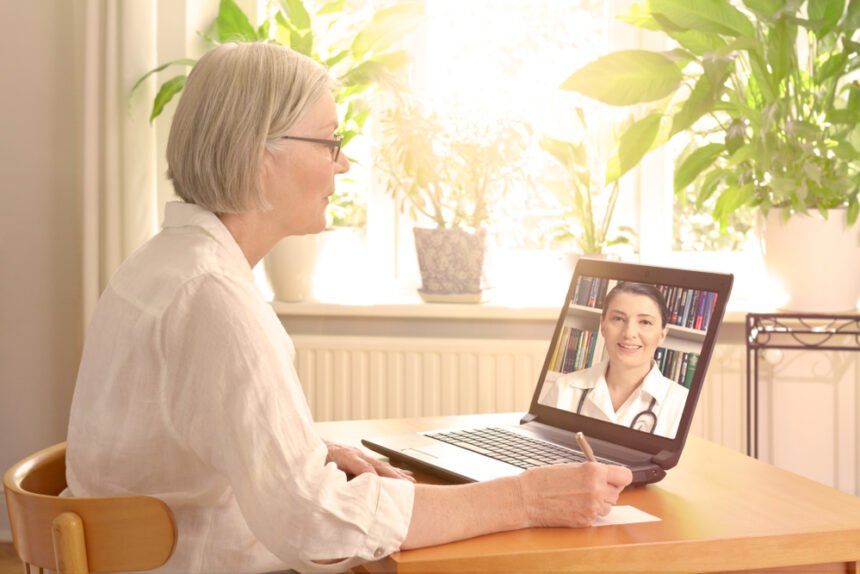If your practice is one of the many that has implemented telehealth services since the start of COVID-19, you’re hardly alone – in your triumphs and in your struggles. It is, after all, no mean feat to deliver quality healthcare to patients via video platform.
Unfortunately, in the rush to close the gap in medical care created by stay-at-home orders across the country, many practices have overlooked equity issues, particularly those facing older telehealth users. For seniors who may lack significant technological literacy and who are more likely to suffer serious health problems, telehealth can be a barrier to proper care, rather than an entry point.
A Rapid Launch, A Lack Of Training
Typically, when a practice begins using telehealth, it’s a slow process. Patients might register for the program during an appointment and have an opportunity to ask questions and explore the system with in-person support. And, most importantly, patients would still have the option to continue receiving care in their typical office setting. By contrast, since the start of COVID-19, telehealth programs have sprung up rapidly, but they’ve been forced to do so with insufficient preparation on either side of the aisle.
The result of this rapid launch: doctors may not feel equipped to run these programs, and they feel even less prepared to troubleshoot user problems for their patients. But while young patients, so-called digital natives, can typically handle that problem solving on their own. Senior patients, who may not even know how to use smartphones, are not so fortunate. The responsibility falls on medical practices, then to provide the education necessary to bridge the gap.
Problem #1: Tech Access And Literacy
The leading challenge facing older adults attempting to use telehealth services right now is a combination of access to technology and the ability to use it. Many seniors don’t own computers or smartphones that can support the platforms, and those who do are not necessarily comfortable with the devices. Indeed, while a 2019 Harris Poll showed that more than half of adults over age 65 were willing to try telehealth services, only 1-2% actually used them, and typically only for tasks like renewing prescriptions. For other services, older adults felt more comfortable visiting their doctors in person.
Luckily, there are several ways that practices can mitigate technology issues among older adults in need of services. First, they can provide a primer on telehealth services including both video- and text-based explanations of the system and what to expect during telehealth appointments. Practices should provide this well in advance of scheduled appointments; it’s preferable to provide the information immediately, even if the patient has no upcoming appointments so they have time to review it and ask for help if necessary.
Providing this information early on also gives your practice time to ask patients about what technology they have access to. Ideally, practices should have someone on staff who can provide real-time instruction on the service and answer questions.
Second, providers should – as much as possible – offer older patients safe alternatives to telehealth, including telephone consultations in place of video. Depending on office conditions and patient needs, it may also be worth creating restricted appointment times that allow patients to be seen in office if they do not feel comfortable receiving telehealth services. With more than half of seniors reporting COVID-19 related care disruption that could put their health at risk, it’s important for providers to create multiple paths to opportunity, even as telehealth remains the preferred option under current conditions.
Problem #2: Accessibility Concerns
The second core problem associated with the sudden introduction of telehealth services actually impacts patients well beyond the 65 and over demographic, but may be particularly pronounced for this group: accessibility. In this case, accessibility refers not to the literal possession of technology, but whether or not that technology is designed to meet the user’s sensory needs.
When working with seniors, the two main issues at play are vision loss and hearing impairment – but individual practices don’t need to solve these problems alone. Practices should review the Hearing Loss Association of America’s Guidelines for Healthcare Providers regarding making telehealth accessible to hearing impaired users; they offer several suggestions about the implementation of interpreting and captioning services that may be useful. As for patients with low vision, be sure to ask about their current technology use. Many already have desktop based accommodations that allow them to navigate, while others may just need help logging on, and another subset may be good candidates for telephone-based appointments.
A Surmountable Challenge
Though implementing telehealth services with seniors can be challenging, it’s far from impossible and, as time goes on, it will only get easier. COVID-19 has forced a new level of technological literacy on many older adults, and a subset of those has taken to life online. Such increased tech literacy among seniors only benefits providers, and this more general exposure to new experiences may make patients more willing to explore telehealth options at this time.
Ideally, practices would have had time to carefully plan telehealth implementation, especially in regards to its use with seniors, but as with so much in healthcare, we must know how to operate in emergency circumstances. These are strange times, but your practice can successfully transition senior patients to telehealth, even if there are some bumps along the way.






